Last updated on
Discover the innovative world of A Frame Kitchen, where we transform ordinary culinary spaces into extraordinary functional and stylish havens for cooking enthusiasts.
Welcome to my latest blog post where I’ll be discussing one of the most popular kitchen designs – the A-frame kitchen. This style has been around for decades and continues to be a favorite among homeowners due to its unique and timeless appeal.
Whether you’re in the process of remodeling your kitchen or simply looking for some design inspiration, this post will provide you with all the information you need to create a stunning A-frame kitchen that suits your style and needs. So, let’s dive in!
Key takeaways:
- A-frame kitchens are characterized by their triangular shape and steeply sloping roofline.
- They offer an open-concept layout that seamlessly blends cooking, dining, and living areas.
- A-frame kitchens can be customized to suit different design styles, from modern to traditional.
- When planning the layout, consider factors like ceiling height, wall angles, and appliance placement.
- Incorporate storage solutions and maximize vertical space to make the most of the kitchen area.
What's Inside
A Frame Kitchen Design

When it comes to designing an A-frame kitchen, the possibilities are endless. This style of kitchen is characterized by its triangular shape and steeply sloping roofline that creates a cozy and inviting atmosphere.
The design allows for ample natural light to flood in through the windows, making it perfect for those who love bright spaces.
One of the key features of an A-frame kitchen is its open-concept layout that seamlessly blends cooking, dining, and living areas into one cohesive space. This makes it ideal for entertaining guests or spending quality time with family while preparing meals.
Another advantage of this type of design is that you can customize your space according to your needs and preferences. Whether you prefer a modern or traditional look, there are plenty of options available when designing an A-frame kitchen.
Planning Your A Frame Kitchen Layout

The unique shape of this style can pose some challenges, but with careful consideration and attention to detail, you can create a functional and beautiful space that meets your needs.
Start by assessing the available space in your kitchen area. Consider factors such as ceiling height, wall angles, and floor plan when determining where appliances will be placed.
It’s important to ensure that there is enough room for movement around each appliance while still maintaining a cohesive flow throughout the entire kitchen.
Next up on your list should be deciding on which appliances are essential for you based on how often they’re used or what type of cooking you do most frequently. For example: if baking is something you enjoy doing regularly then having an oven with multiple racks would make sense; if entertaining guests often then having ample counter space would come in handy.
Kitchen Layout Basics

The right layout can make all the difference in how functional and efficient your kitchen will be. There are several basic layouts that you can choose from when planning your A-frame kitchen design.
The first and most common layout is a U-shaped or horseshoe-shaped configuration, which provides ample counter space for food preparation and storage. This type of layout also allows for easy traffic flow between work areas.
Another popular option is an L-shaped configuration, which works well in smaller kitchens as it maximizes corner spaces while still providing plenty of countertop area.
For larger kitchens with more open floor plans, a galley-style or parallel design may be ideal as it creates two separate work zones on opposite walls while maintaining an open feel throughout the space.
No matter what type of A-frame kitchen you choose to create, keep in mind that functionality should always come first when deciding on a layout.
A-Frame Design Benefits
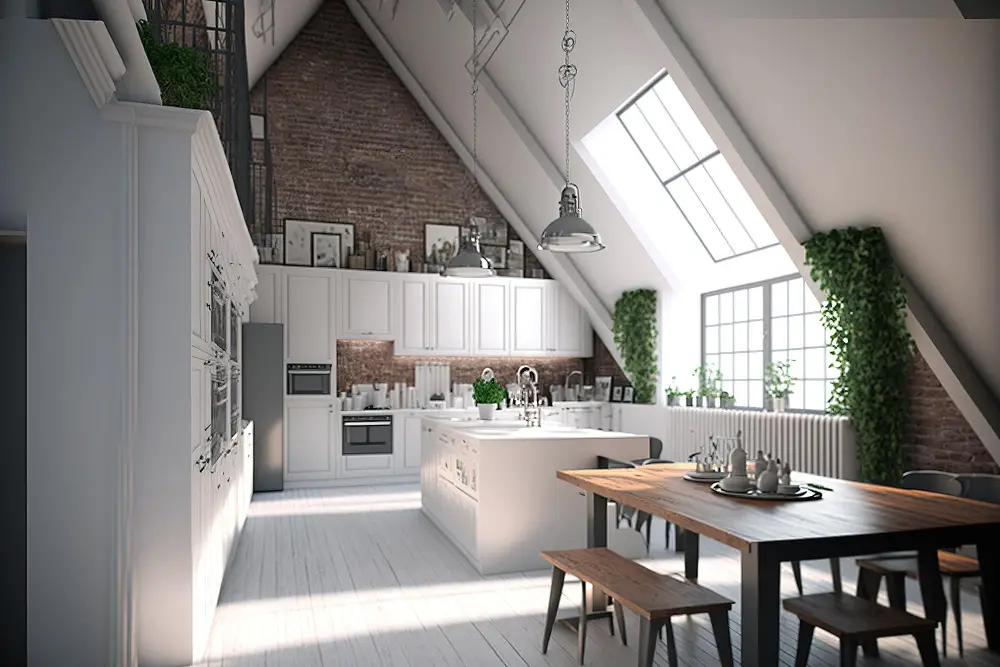
This style features a steeply angled roofline that creates an open and airy feel, making it perfect for small spaces or homes with low ceilings. One of the main benefits of this design is that it maximizes vertical space, allowing you to add more storage options without sacrificing floor space.
Another advantage of the A-frame kitchen layout is its versatility in terms of appliance placement. With ample wall space available, you can easily install appliances such as ovens, microwaves or refrigerators at eye level for easy access while cooking.
An A-frame kitchen provides plenty of natural light through large windows placed strategically on the walls or skylights installed in the ceiling peak. This not only enhances your cooking experience but also makes your culinary haven appear brighter and more inviting.
Essential Appliances

The appliances you choose should not only be functional but also complement your overall design aesthetic. Some essential appliances that every A-frame kitchen should have include a refrigerator, stove or cooktop with oven, dishwasher and microwave.
Refrigerators come in various sizes and styles to fit any space and budget. Consider choosing one with French doors or side-by-side doors for easy access to both fresh food and frozen items.
A stove or cooktop with an oven is another must-have appliance in any kitchen. Gas stoves are popular among chefs because they provide precise temperature control while electric stoves are easier to clean due to their smooth surface.
Dishwashers make cleaning up after meals a breeze by eliminating the need for hand washing dishes which can save time especially when entertaining guests frequently. Lastly, microwaves offer quick heating options for leftovers as well as defrosting frozen foods without having them lose their texture.
When selecting these essential appliances consider energy efficiency ratings which will help reduce utility bills over time while still providing optimal performance levels needed in your cooking space.
Appliance Selection for A Frame Kitchens
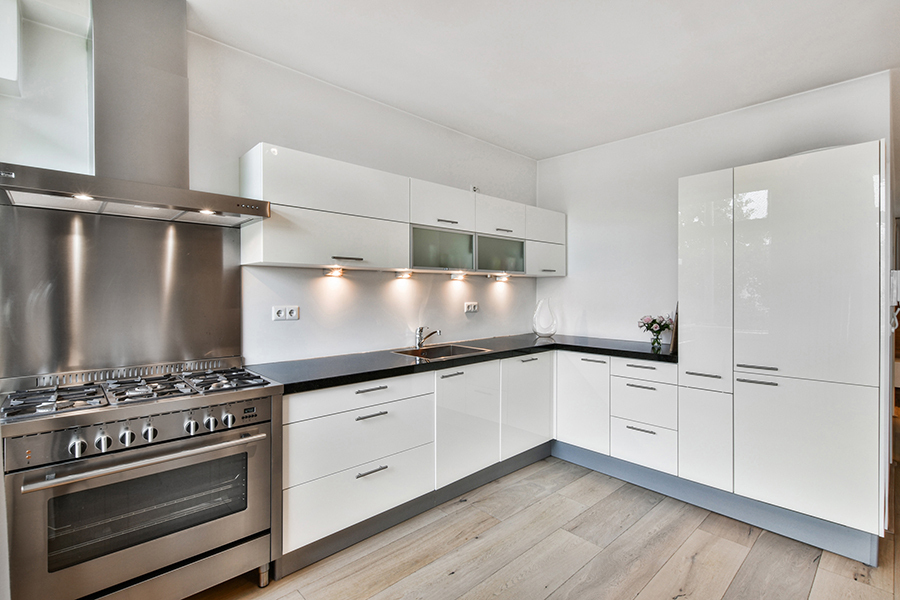
Since the space in an A-frame kitchen can be limited, choosing appliances that are compact yet efficient is key. Look for models with a slim profile or those that can be built into cabinetry to save on counter space.
For cooking enthusiasts who love hosting dinner parties or family gatherings, investing in high-quality appliances such as a double oven or range hood will make meal preparation more manageable and enjoyable. Incorporating energy-efficient models not only helps reduce your carbon footprint but also saves money on utility bills.
In terms of style, stainless steel finishes remain popular due to their sleek look and durability. However, if you’re looking for something different than the normative options available today’s market offers various colors like black stainless steel which adds depth while maintaining its modern appeal.
Cabinetry Options

Not only does it provide ample storage space for your cooking essentials, but it also plays a significant role in defining the overall aesthetic of your kitchen.
There are several cabinetry options available for A-frame kitchens, ranging from traditional wood cabinets to sleek and modern designs. If you’re looking for a classic look that will stand the test of time, then solid wood cabinets may be the perfect choice.
They come in various finishes and styles that can complement any decor style.
On the other hand, if you prefer a more contemporary look with clean lines and minimalistic design features, then frameless or flat-panel cabinets might be ideal choices. These types of cabinets offer plenty of storage space while maintaining an uncluttered appearance.
Another option worth considering is glass-fronted cabinet doors which add visual interest by showcasing decorative items such as dishes or glasses while still providing practical storage solutions.
A Frame Kitchen Cabinetry Options

The right cabinets will not only provide ample storage but also enhance the aesthetic appeal of your kitchen. There are several cabinetry options available for A-frame kitchens, ranging from traditional to modern styles.
One popular option is custom-made cabinets that fit perfectly into the unique angles and slopes of an A-frame design. These bespoke pieces can be tailored to suit your specific needs and preferences while maximizing every inch of available space in your kitchen.
Another option is semi-custom or stock cabinets that come in standard sizes but offer various finishes, colors, and hardware options to choose from. This type of cabinet may be more affordable than custom-made ones while still providing a stylish look for any budget.
Storage Solutions

Fortunately, there are several creative ways to incorporate storage into your kitchen without sacrificing style or functionality.
Consider installing custom cabinetry that fits seamlessly into the unique angles and slopes of your A-frame ceiling. This will not only provide ample storage but also add visual interest to your space.
Another option is to utilize vertical wall space by installing open shelving or hanging pot racks for frequently used items such as pots, pans, and utensils. This can free up valuable counter and cabinet space while adding a decorative element to your kitchen.
For smaller kitchens with limited floor area, consider incorporating pull-out pantry cabinets or corner drawers that make use of every inch of available space. These innovative solutions allow you to store more items in less square footage without compromising on accessibility.
Storage Solutions for A Frame Kitchens

Fortunately, there are several creative ways to incorporate storage into your design without sacrificing style or efficiency.
Consider installing custom cabinetry that fits snugly against the walls and ceiling, utilizing every inch of available space. You can also add pull-out drawers and shelves for easy access to pots, pans, and other cooking essentials.
Another option is to install open shelving above countertops or near windows for a decorative touch while providing additional storage space. This not only adds visual interest but also allows you to display your favorite dishes or cookbooks within reach.
If you have limited floor space in your A-frame kitchen, consider using vertical wall-mounted racks for storing utensils such as knives and spatulas. These racks come in various sizes and styles so you can choose one that complements your overall design aesthetic.
Space Maximization

Due to its unique shape, it can be difficult to fit all the necessary appliances and storage solutions without making the room feel cramped. However, with some careful planning and creativity, you can make your A-frame kitchen feel spacious and functional.
To start with space maximization in your A Frame Kitchen design process, consider incorporating built-in cabinets that extend up to the ceiling. This will provide ample storage for items that are not frequently used while keeping them out of sight.
Another way to maximize space is by using multi-functional furniture pieces such as a kitchen island or breakfast bar that doubles as a workspace or dining area. You could also opt for foldable tables or chairs which can be easily stored away when not in use.
Lighting plays an important role in creating an illusion of more significant spaces too; installing recessed lighting fixtures under cabinets will help brighten up dark corners while adding depth perception into small areas.
Maximizing Space in an A Frame Kitchen

Due to the unique shape of this type of kitchen, it can be difficult to fit all your appliances and storage solutions in a way that makes sense. However, with some careful planning and creative thinking, you can make the most out of every inch.
Firstly, consider using multi-functional furniture such as a table that doubles as extra counter space or seating with built-in storage compartments. Secondly, take advantage of vertical spaces by installing tall cabinets or shelving units for storing items like pots and pans.
Another great way to maximize space in an A-frame kitchen is by incorporating pull-out drawers into your cabinetry design instead of traditional shelves. This allows you to easily access everything stored inside without having to dig through piles looking for what you need.
Lastly, don’t forget about utilizing any unused corners in your layout! Installing corner cabinets or adding floating shelves will give you additional storage options while keeping clutter off countertops and floors.
Kitchen Countertops

First and foremost, you want a surface that is durable and easy to clean. Granite countertops are a popular choice due to their durability and resistance against scratches, heat damage, and stains.
Quartz countertops offer similar benefits but require less maintenance than granite. If you’re looking for something more budget-friendly or eco-friendly option then laminate or recycled glass countertops can be great choices as well.
Another factor in selecting the perfect countertop is its color scheme which should complement your cabinetry while also adding visual interest without overwhelming other design elements in the space. Ultimately, when selecting a kitchen countertop material for an A-frame kitchen layout it’s important not only think about functionality but also aesthetics so that they work together seamlessly creating an inviting atmosphere where cooking becomes enjoyable rather than just another chore on our list of things we have to do every day!
Countertop Choices for A Frame Kitchens

The choice you make will depend on your personal style, budget, and how much maintenance you’re willing to do.
Granite is a popular choice due to its durability and natural beauty. It’s also heat-resistant and easy to clean but requires regular sealing.
Marble is another elegant option that adds a touch of luxury to any kitchen space. However, it’s more porous than granite and can stain easily if not sealed properly.
Quartz countertops are engineered stone surfaces that offer the look of natural stone without requiring as much maintenance or upkeep. They come in various colors and patterns but tend towards being pricier than other materials.
Solid surface countertops like Corian or acrylics provide an affordable alternative with seamless installation possibilities while still offering excellent durability against scratches or stains. Laminate counters remain one of the most cost-effective choices available today; they come in many different styles from wood grain finishes all way up through high gloss metallic looks!
Island Functionality

Not only does it provide additional counter space, but it also serves as a gathering spot for family and friends. When planning your island design, consider its functionality beyond food preparation.
For instance, you can incorporate storage solutions such as drawers or cabinets to keep utensils and cookware within reach while cooking. You can also add seating options like bar stools or chairs to create an informal dining area that complements your kitchen’s style.
Moreover, if you have enough space in your A-frame kitchen layout, consider adding appliances like a sink or stovetop on the island for added convenience during meal prep time.
Versatile Seating
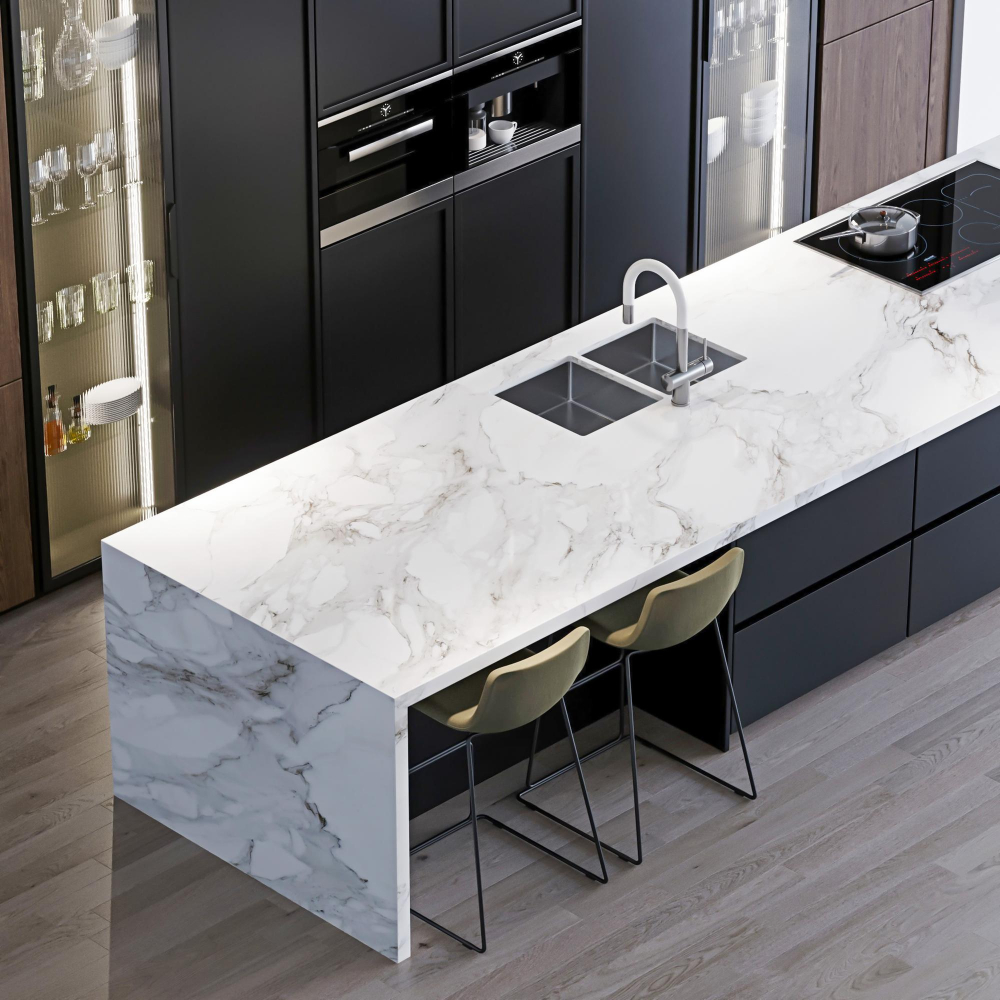
The good news is that there are plenty of versatile seating options available for you to choose from.
One popular choice for A-frame kitchens is bar stools. These come in various styles, materials, and colors to match your cabinetry or countertop choices.
Bar stools are perfect if you have a kitchen island or peninsula as they provide additional seating without taking up too much floor space.
Another option worth considering is built-in bench seating with storage underneath. This type of seat not only provides ample sitting room but also doubles as extra storage for pots, pans, and other cooking essentials.
If you’re looking for something more flexible than fixed seats like benches or barstools then consider using chairs instead! Chairs offer versatility because they can be moved around easily depending on how many people need seats at any given time – plus there’s no limit on the number of chairs you can add!.
Incorporating Dining Areas in A Frame Kitchens

Whether you prefer a cozy breakfast nook or a formal dining table, there are plenty of ways to incorporate these features into your kitchen design.
When planning your dining area, consider the size and shape of your A-frame kitchen. If you have limited space, opt for compact furniture such as a small round table with chairs that can be tucked away when not in use.
Alternatively, if you have more room to work with, consider adding an island or peninsula with seating options.
Another important factor to keep in mind is lighting. Make sure that your dining area has adequate lighting so that meals can be enjoyed comfortably even during darker hours.
Don’t forget about decor! Incorporating decorative elements such as artwork or plants can help create a warm and inviting atmosphere in any eating space within an A-frame kitchen.
Lighting Fixtures

Proper lighting can enhance the ambiance of your space while also providing functionality for cooking and food preparation. When selecting lighting fixtures for your A-frame kitchen, consider a combination of task lighting, ambient lighting, and accent lights to create a warm and inviting atmosphere.
Task Lighting: Task lights are designed to provide focused illumination in specific areas where you need it most. In an A-frame kitchen layout, under-cabinet LED strip lights or pendant lamps above the countertop can be used as task light sources.
Ambient Lighting: Ambient light sources such as recessed ceiling lights or chandeliers add overall brightness to your space without creating harsh shadows or glare.
Accent Lights: Accent lights highlight specific features in your A frame-kitchen such as artwork on walls or decorative elements like plants on shelves. Wall sconces with dimmer switches work well for this purpose.
When choosing light fixtures for an A Frame Kitchen design keep in mind that they should complement each other while also fitting into the overall aesthetic theme you have chosen.
Lighting Ideas for A Frame Kitchens

Proper lighting can enhance the ambiance of your space while also providing functional illumination for cooking and food preparation. When it comes to lighting ideas for A-frame kitchens, there are several options to consider.
One popular choice is pendant lights that hang from the ceiling above a kitchen island or dining area. These fixtures come in various styles, sizes, and colors that can complement your overall decor theme while also providing ample light.
Another option is under-cabinet lighting which illuminates countertops where you prepare meals or do other tasks requiring good visibility. This type of fixture not only adds functionality but also creates a warm glow throughout the room.
Recessed lights installed into the ceiling provide general ambient light without taking up valuable headspace in low-ceilinged A frame spaces. Natural light should be considered when designing an A Frame Kitchen as they often have large windows with stunning views due to their unique shape.
Flooring Choices

The right choice will depend on your personal preferences, budget, and the overall design aesthetic you’re trying to achieve.
Hardwood floors are a popular choice for many homeowners due to their durability and timeless appeal. They come in various finishes such as oak or maple that can complement any color scheme or style.
Another option is tile flooring which offers versatility in terms of design choices. You can opt for classic ceramic tiles with intricate patterns or go bold with colorful mosaic designs that add character and personality.
For those who prefer eco-friendly options, bamboo flooring is an excellent alternative as it’s sustainable while still being durable enough for high traffic areas like kitchens.
Vinyl plank floors have also become increasingly popular due to their affordability while offering the look of hardwood without breaking the bank. Plus they’re easy-to-clean making them ideal if you have kids or pets around!
Flooring Recommendations for A Frame Kitchens
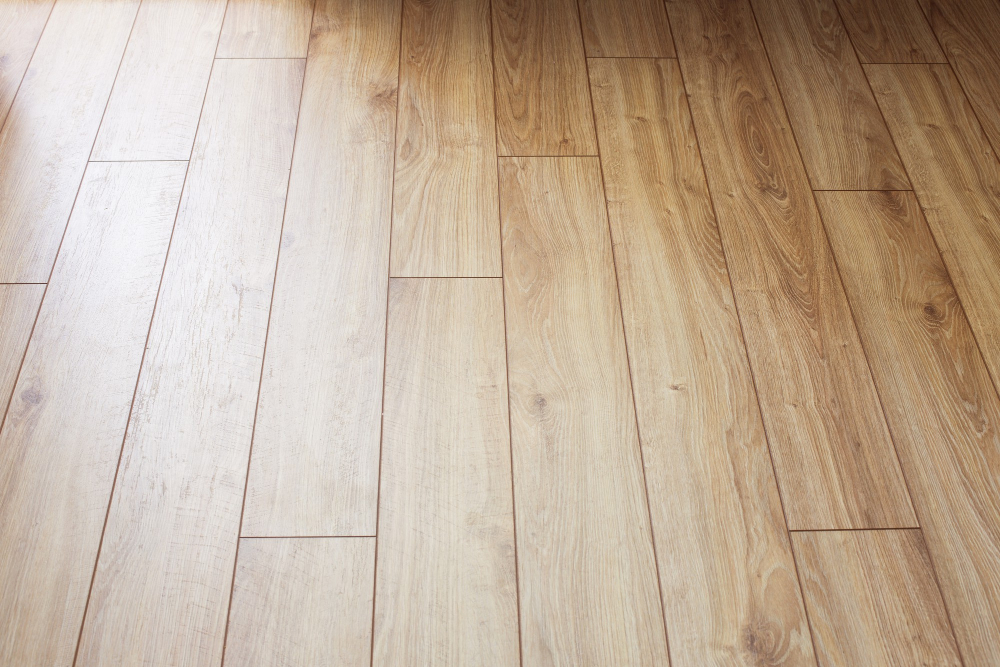
One popular choice is hardwood flooring, which adds warmth and natural beauty to any kitchen design. Hardwood floors come in a variety of finishes and colors, making them versatile enough to complement any decor style.
Another great option is tile flooring, which offers durability and easy maintenance. Tiles come in various sizes, shapes, patterns as well as materials such as ceramic or porcelain tiles that offer different textures from smooth surfaces to more rugged ones like slate or travertine.
If you’re looking for something eco-friendly yet stylish at the same time then bamboo floors might be perfect for you! They are sustainable because they grow quickly without pesticides or fertilizers while providing an elegant finish with their unique grain pattern.
Wall Treatments

The walls in your A-frame kitchen can be a blank canvas for you to express your creativity and style. You can choose from various wall treatment options such as paint, wallpaper, tiles or even exposed brickwork.
When selecting a wall treatment for your A-frame kitchen, consider the overall theme of the space. If you prefer a minimalist look with clean lines and neutral colors, then opt for simple painted walls or subtle textured wallpapers that complement this aesthetic.
On the other hand, if you want to add some personality to your space through bold patterns or vibrant hues on feature walls – go ahead! Just make sure it doesn’t clash with other elements in the room like cabinetry or countertops.
Another popular option is using tiles as they offer durability while adding texture and color variation to create visual interest on backsplashes behind stoves/sinks areas. Tiles come in different shapes (square/rectangular) sizes (small/large), materials (ceramic/glass/metal/natural stone) finishes (matte/glossy/textured).
Window Selections

They provide natural light, ventilation, and a view of the outdoors that can make cooking more enjoyable. When selecting windows for your A-frame kitchen, consider their size and placement carefully to maximize their benefits.
Large windows that extend from floor to ceiling or cover most of the wall will allow plenty of sunlight into your space while providing a stunning view outside. If you have limited wall space due to cabinetry or appliances’ placement, consider installing smaller windows above them or on adjacent walls.
Another factor to keep in mind is the type of window you choose. Casement windows with cranks offer excellent ventilation options but may not be suitable if they open onto high-traffic areas like walkways or patios where people could bump into them accidentally.
Double-hung windows with sashes that slide up and down work well in tight spaces since they don’t require much clearance when opening/closing them; however, they may not provide as much airflow as casement ones do.
Lastly, think about energy efficiency when choosing your window selections for an A Frame Kitchen – double-pane glass with low-E coatings can help reduce heat loss during winter months while keeping out unwanted UV rays during summer months.
Color Schemes
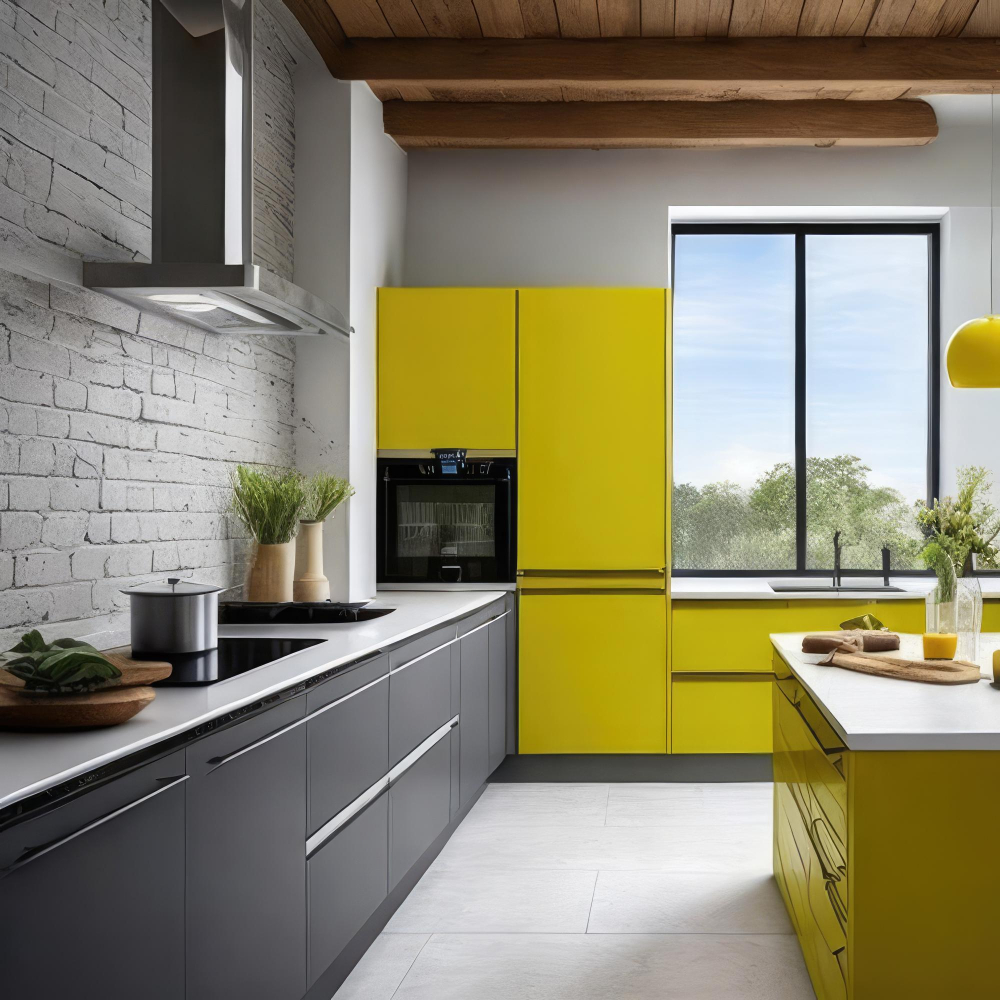
The colors you choose can set the tone for your entire space and impact how you feel when cooking or entertaining guests. One of the most popular color schemes for A-frame kitchens is a neutral palette with pops of bold accent colors.
This approach creates a timeless look that won’t go out of style anytime soon.
If you prefer something more vibrant, consider using bright hues like reds, yellows or blues as accents against white walls and cabinetry. You could also opt for monochromatic shades such as different tones of gray or beige to create depth in your design.
Another option is to use natural materials like wood finishes on cabinets and floors paired with earthy tones such as greens and browns which will give your kitchen a warm ambiance while still maintaining its modern appeal.
A Frame Kitchen Color Schemes

The colors you choose can make or break the overall look and feel of your space. One popular option for A-frame kitchens is a neutral color palette that includes shades of white, beige, gray, and brown.
These colors create a warm and inviting atmosphere while also providing a timeless appeal.
If you’re looking to add some pops of color to your kitchen design, consider incorporating bold accents in strategic areas such as backsplashes or cabinet hardware. Bright blues or greens can add energy and vibrancy without overwhelming the space.
Another trend in A-frame kitchen design is using contrasting colors for cabinets and countertops. For example, pairing light-colored cabinets with dark granite countertops creates an eye-catching contrast that adds depth to your space.
Ultimately when selecting a color scheme for your A Frame Kitchen it’s important not only to consider aesthetics but also functionality – darker hues may be more practical if you have young children who are prone spills while lighter tones will help brighten up smaller spaces.
Textured Elements

Textured materials such as brick, stone, or wood can add depth and character to the space. Consider incorporating exposed wooden beams on the ceiling or adding a brick backsplash behind your stove for an eye-catching focal point.
Another way to introduce texture is through textiles like curtains, rugs, and table runners. These soft furnishings not only add visual interest but also provide comfort underfoot while cooking or entertaining guests.
If you’re looking for something more subtle yet still impactful in terms of texture, consider using tiles with raised patterns on your kitchen walls or floors. This will give the room dimension without overwhelming it with too much detail.
Personal Touches

Personalizing your kitchen is an essential step in making it feel like home. There are many ways to achieve this, from incorporating unique decor pieces to adding a pop of color with accessories or artwork.
One way to personalize an A-frame kitchen is by displaying family photos or artwork on the walls. This not only adds visual interest but also creates a warm and inviting atmosphere for family and guests alike.
Another idea is to incorporate plants into the space, whether they’re potted herbs on the windowsill or hanging planters above the island. Plants bring life into any room and can help purify indoor air while adding natural beauty.
You can also choose decorative hardware for cabinets that reflects your taste – whether sleek modern handles or vintage-inspired knobs – as well as selecting statement lighting fixtures that complement other elements in your design scheme.
Don’t forget about textiles! Adding colorful dish towels, patterned placemats, or even a cozy rug underfoot can make all difference when creating a personalized look for an A-frame kitchen.
A Frame Kitchen Decor Ideas

The key is to find a balance between functionality and style while incorporating personal touches that reflect your personality and taste.
One way to add character and warmth to an A-frame kitchen is by using natural materials such as wood, stone, or brick. These elements can be incorporated into the flooring, countertops or backsplash for a rustic feel that complements the overall design of an A-frame home.
Another decor idea for an A-frame kitchen is adding pops of color through accessories like curtains, dishware or even artwork on walls. This will help brighten up space while also creating visual interest in areas where there may not be much going on otherwise.
Don’t forget about lighting! Proper lighting can make all the difference in any room but especially in kitchens where you need ample light sources for cooking tasks. Pendant lights over islands or under-cabinet lighting are great options that provide both function and style.
Sustainability Features

One of the most effective ways to achieve this is by investing in energy-efficient appliances that consume less power while still providing optimal performance. Look for products with Energy Star ratings or other certifications that indicate they meet high standards for efficiency.
Another way to make your A-frame kitchen more sustainable is by incorporating eco-friendly materials into its design. For example, you could opt for countertops made from recycled glass or bamboo flooring instead of hardwoods sourced from old-growth forests.
Consider installing low-flow faucets and showerheads as well as water-saving toilets to conserve water usage throughout your home. You may also want to explore options like rainwater harvesting systems or greywater recycling systems if you’re looking for more advanced sustainability solutions.
Safety Considerations

The kitchen is one of the most accident-prone areas in a home, and taking precautions can prevent injuries and accidents. One crucial aspect to consider is the placement of appliances such as ovens, stovetops, and microwaves.
These should be installed at a safe distance from each other to avoid any potential fire hazards or burns.
Another important consideration is flooring material; it should be slip-resistant for added safety when cooking or cleaning up spills. Make sure that all electrical outlets are properly grounded with GFCI (ground fault circuit interrupter) protection.
Lastly but not least important: ensure that you have adequate ventilation in your A-frame kitchen space by installing an exhaust fan above the stove area; this will help remove smoke and fumes from cooking activities while keeping air quality high.
Remodeling Tips

However, with the right planning and execution, you can transform your outdated or inefficient space into a functional and stylish culinary haven. Here are some remodeling tips to help you achieve the perfect A-frame kitchen:
1. Plan ahead: Before starting any renovation work, make sure you have a clear idea of what changes need to be made in terms of layout, appliances selection and cabinetry options.
2. Consider functionality: When designing your new kitchen layout consider how each area will function together as well as individually.
3. Maximize storage space: Utilize every inch of available space by incorporating smart storage solutions such as pull-out drawers or corner cabinets.
4. Choose durable materials: Opt for high-quality materials that are both durable and easy-to-maintain such as quartz countertops or hardwood flooring.
5. Incorporate lighting fixtures wisely: Proper lighting is essential in any kitchen design so choose light fixtures that provide ample illumination while also adding visual interest to the room’s decor scheme.
Renovating an Existing A Frame Kitchen

One of the first steps is to assess what needs updating. Are your cabinets outdated or in need of repair? Do your appliances need replacing? Is there enough storage space for all your cooking essentials?
Once you’ve identified areas that require attention, consider incorporating modern design elements into the existing layout. For example, adding a new backsplash or countertop can give an instant facelift to any kitchen without requiring a complete overhaul.
Another option is changing up lighting fixtures and window treatments for better illumination and ventilation respectively.
Don’t forget about personal touches such as artwork or decorative items that reflect your style preferences.
Creating an Open-Concept A Frame Kitchen

It involves removing walls and barriers to create a seamless flow between the kitchen, dining, and living areas. This design concept works particularly well with A-frame kitchens as it maximizes the available space while creating an inviting atmosphere.
To achieve this look, you can start by removing any unnecessary walls or partitions that separate your kitchen from other rooms in your home. This will allow natural light to flood into the space and make it feel more spacious.
Another way to create an open-concept A-frame kitchen is by incorporating multi-functional furniture pieces such as islands or breakfast bars that serve both as cooking surfaces and eating areas. These features not only add functionality but also provide additional storage options for small appliances or cookware.
When designing your open-concept A-frame kitchen, consider using similar color schemes throughout all spaces for continuity purposes. You can also use textured elements like exposed brickwork or wooden beams on ceilings/walls to add character while maintaining visual interest across different zones of your home.
Budget Planning

Before you start shopping for appliances or selecting cabinetry options, it’s essential to determine how much money you’re willing and able to spend on your project. This will help guide your decisions and ensure that you stay within your financial means.
To begin with, create a list of all the items needed for the renovation or remodeling process. Categorize them into must-haves and nice-to-haves so that if there are any cost overruns during construction, you can prioritize which items need immediate attention.
Once this is done, research prices online or visit home improvement stores in person to get an idea of what each item costs. Don’t forget about installation fees as well! It’s important to factor these into your budget as they can add up quickly.
Set aside some extra funds for unexpected expenses such as repairs or replacements down the line – better safe than sorry!.
By taking these steps early on in the design process and sticking closely to them throughout construction phase will help keep costs under control while still achieving a beautiful A-frame kitchen design that meets all of your needs without breaking the bank!.
FAQ
Is in-frame kitchen worth it?
Answer: Yes, an in-frame kitchen is worth it due to its simple, elegant appearance and increased durability, which keeps your kitchen looking great for an extended period.
How much more expensive is in-frame kitchen?
In-frame shaker kitchens are approximately 20% more expensive than lay-on shaker kitchens.
What is a in-frame kitchen?
An in-frame kitchen refers to a kitchen design where the door is inset within a frame fitted to the front of a kitchen carcass, offering both visual and practical benefits.
What are the benefits of an inframe kitchen?
Answer: The benefits of an inframe kitchen include a more elegant appearance and increased durability due to reduced wear and tear on cabinet door edges.
What are the key differences between an in-frame and a frameless kitchen?
In-frame kitchens feature doors inset within a visible frame, while frameless kitchens have doors mounted directly onto the cabinets with concealed hinges.
How does the maintenance of an in-frame kitchen compare to other kitchen styles?
“In-frame kitchens generally require more maintenance than other kitchen styles due to their wooden frame construction.”
What are the most popular design options for in-frame kitchens?
In-frame kitchens’ most popular design options include shaker-style cabinets, classic color schemes, natural materials, modern appliances, and enhanced storage solutions.





